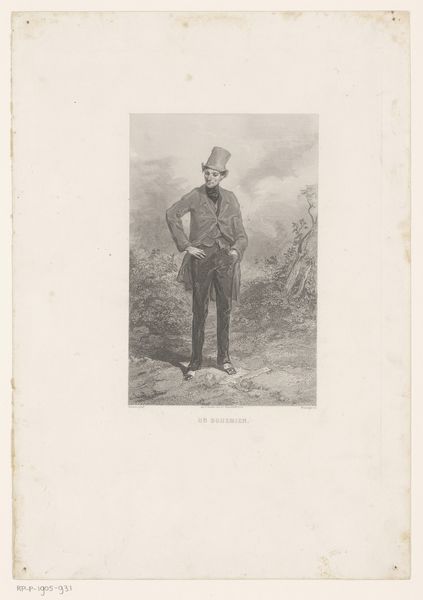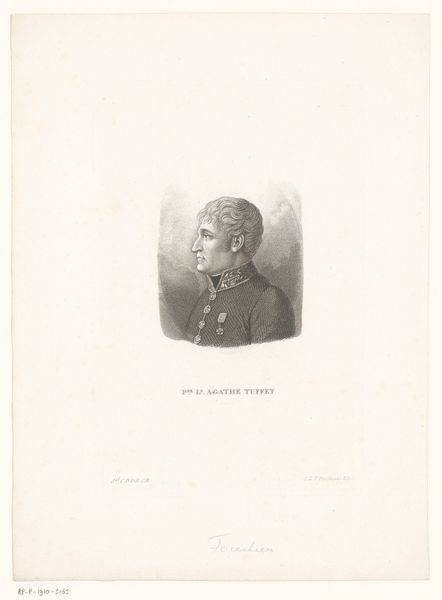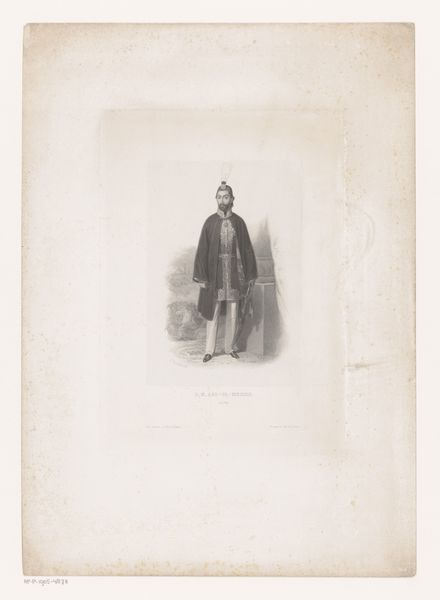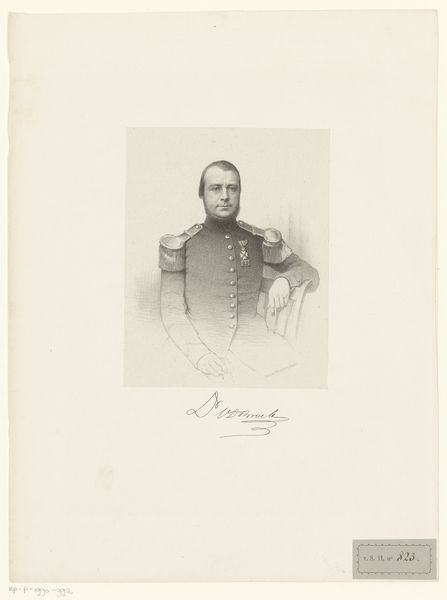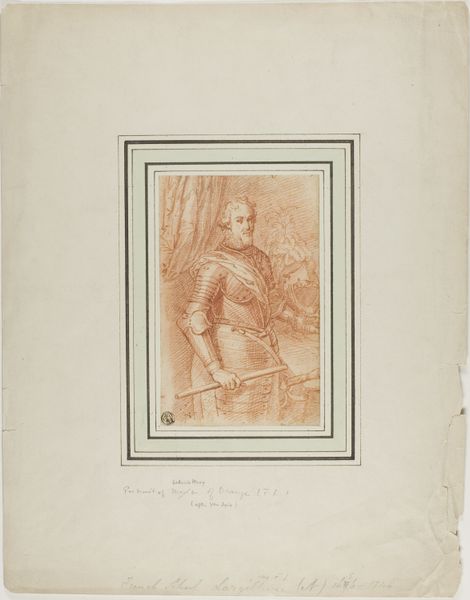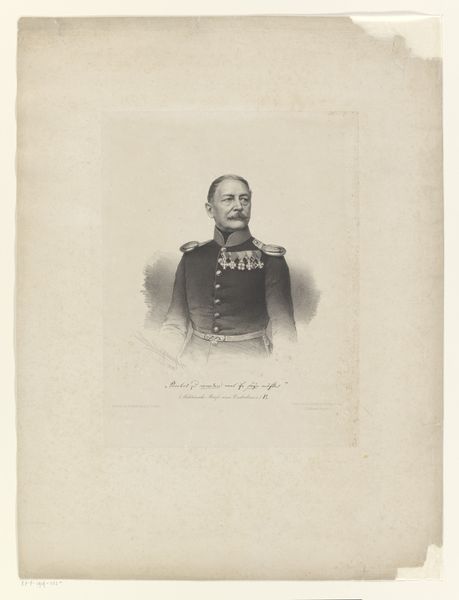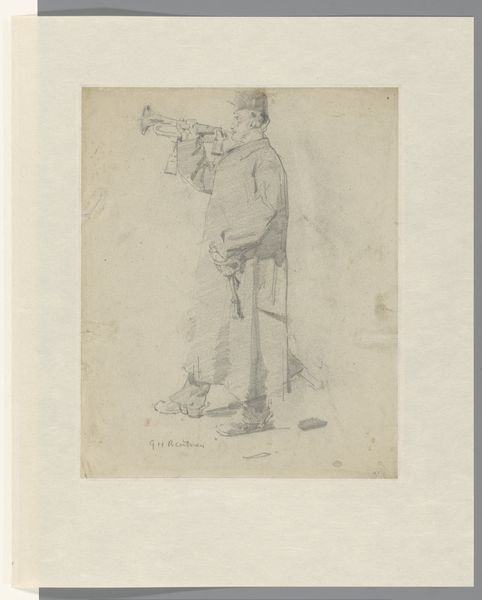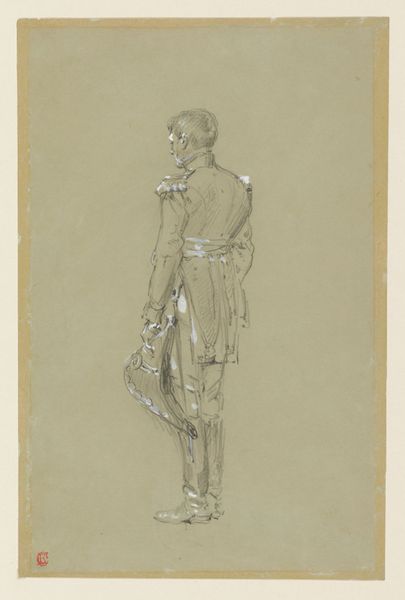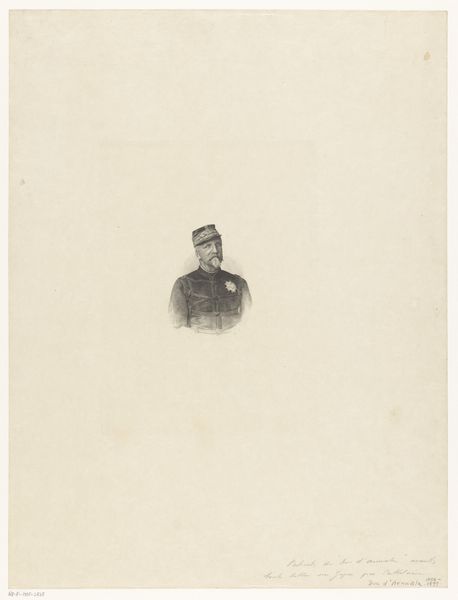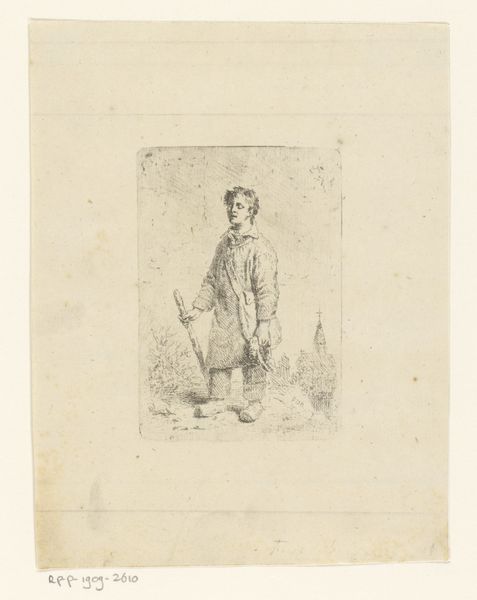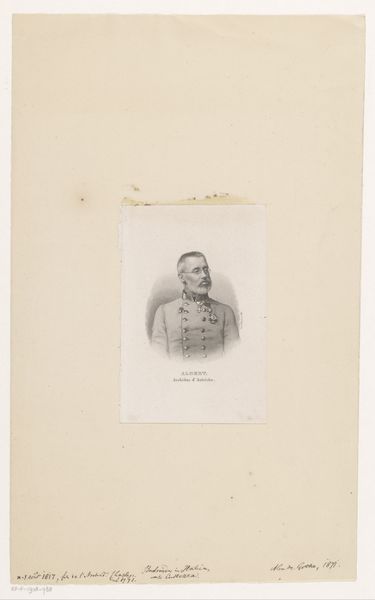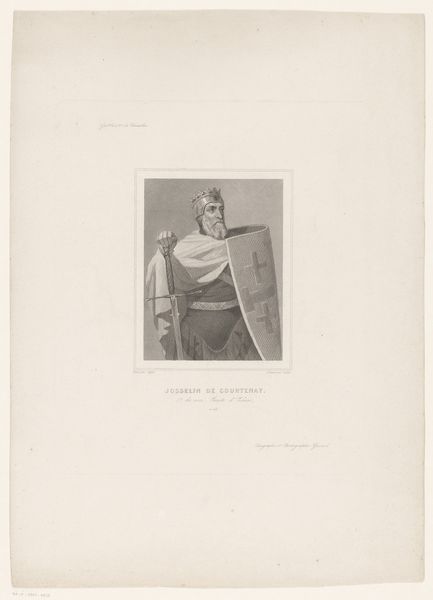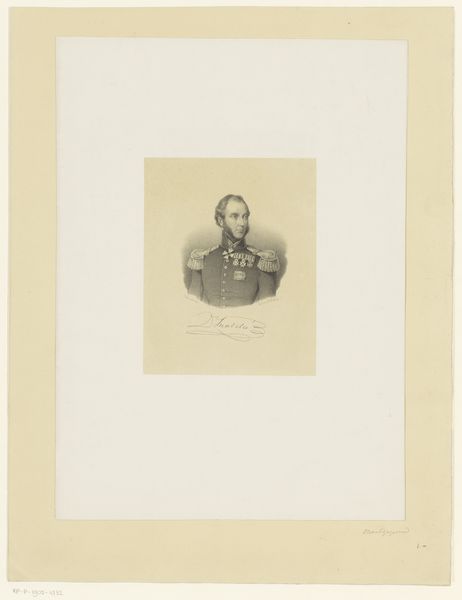
Dimensions: height 445 mm, width 315 mm
Copyright: Rijks Museum: Open Domain
Editor: So, this is "Portret van Jean-Pierre Piat" by Adolphe Mouilleron, created sometime between 1830 and 1881. It's a pencil drawing currently held at the Rijksmuseum. It feels very formal and almost a bit austere to me. What do you see in this piece? Curator: Well, initially, I see the visual vocabulary of power. The sitter's military attire, complete with epaulettes and decorations, speaks of a certain societal position and, perhaps, a life of service. Notice how the artist has used pencil to render not just a likeness, but a kind of stoicism, wouldn't you agree? The tight-lipped expression and direct gaze are classic cues. Editor: Definitely, the details in the uniform are quite striking. Do you think those decorations would hold specific meanings to viewers at the time? Curator: Absolutely. Medals and decorations are powerful symbols that communicate not only the individual's achievements, but also the values and ideals of the state. Think of them as visual shortcuts. Each emblem carries stories of battles fought, services rendered, and allegiances sworn. How do you feel this visual encoding affects your understanding of Piat as an individual? Editor: That's interesting. It almost makes him less of an individual and more of a representation of something larger, a symbol of authority. Curator: Precisely! And think about the realism of the portrait itself – the wrinkles, the slight asymmetry of his features. These details humanize him even as the uniform seeks to elevate him. It's a visual tension between the man and his role, isn't it? Editor: It really is. I hadn’t considered that interplay before. I see so much more now. Thanks! Curator: It's fascinating how symbols work on us. Art, even in portraiture, gives us a way to analyze visual messaging in culture, through time.
Comments
No comments
Be the first to comment and join the conversation on the ultimate creative platform.
